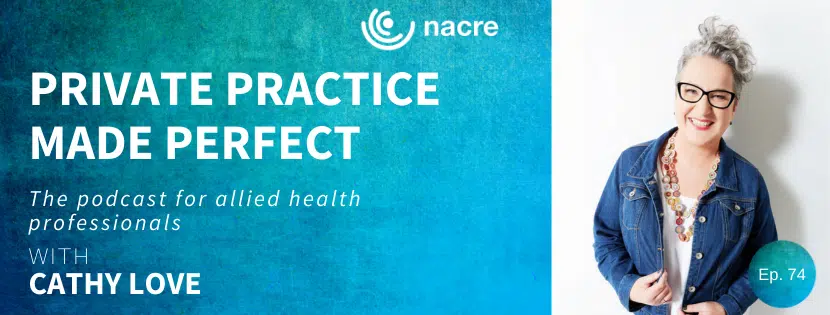There is a question I get asked a couple of times a week: How do I build a team?
When I’m asked this question, people aren’t always referring to their clinical team, often they’re talking about their admin team. I am a big fan of bringing admin into the business before you bring in clinical teammates because if you bring a clinician in first, guess what doubles? The admin.
It may seem like a simple question to ask, but building the right team, at the right time, is key to building a successful allied health business.
What excites me most about this question is it shows allied health business owners are growing; they’re getting more work than they can handle and enjoy.
Subscribe here: Apple Podcast, Stitcher, Subscribe on Android, Player.fm, RSS
Building a team, not staff
When I think of the best way to build a team, a wonderful book I’ve read springs to mind. The Business Legal Lifecycle: How to Successfully Navigate Your Way from Start-Up to Success by Jeremy Streten is written for the small business environment in Australia. I wish I had this book seventeen years ago when I was building a team for my business. It would have fast-tracked my knowledge exponentially. (Click here for an interview I did with Jeremy on the podcast).
First things first, you need to ask yourself, do I want staff or do I want a team? Then you need to think about how you will bring people on board. That’s where the struggle tends to be: the model of engaging people.
Usually with admin, there is the human option, someone who can come and work with you for X number of hours per week. There’s also the option of a virtual assistant (VA), which is a brilliant alternative for solopreneurs and the small agile businesses because it cuts out the need for costly and complicated employment contracts. You still need a position description, but it is a great first step towards building team on the admin front.
On the other hand, you can build your team with independent contractors, full-time and part-time employees. There’s also more and more hitting the airwaves about casual employees.
Independent contractors vs employees
Not everyone is comfortable with engaging independent contractors. Some see it as a risk, but it is a model of engaging people that has changed over the years. I still believe that independent contractors, with the right understanding, the right agreement and the right management strategies, can really serve some allied health businesses beautifully.
Independent contractors are supposed to bring their own tools and are able to contract out to others. They are very independent; they are responsible for their own scheduling and can decline work.
With an independent contractor, you’re not talking about billable hours so ideally, they should be used for work that has an end date. It can work well, but you’ve got to have your wits about you in terms of understanding the agreement and understanding how to manage an independent contractor.
If you want to head in that direction, it’s important you read the indicators on the Australian Tax Office and the Fair Work Australia websites. The indicators don’t seem to agree with each other, which is why it’s even more important that you get smart HR advice. (If you need advice on HR advisors, please contact me.)
At the other end of the spectrum, you have casual employees. It’s a trend that’s grown over the years but is somewhat unknown to many small business owners.
Casual employees can be full-time, permanent full-time, permanent part-time and can have a fixed end date. A recent change is that after 12 months of casual employment, the employee is entitled to ask to be made permanent. The salary of a casual employee is based on the award rate. You pay superannuation, but they don’t receive the holiday and leave loadings. Instead, they get a 25 loading on their hourly rate and are engaged to do a minimum number of hours per shift.
Once again, it’s an interesting, flexible option that could be a win win for the employee and the business owner but, like everything else, the devil is in the detail. So whichever option you choose, it’s key that you understand what your obligations are so you are compliant and transparent with your operations.
Be HR smart
Regardless of who you bring into your team, you’ll need a detailed position description and a contract, which should be drawn up by a HR professional.
Investing in proper HR advice will ensure you understand the contract you’re offering, and are able to explain it and ask questions around it during the recruitment process.
It’s really good investment for your leadership knowledge, your management knowledge and making sure you are providing a safe, compliant, awesome work place for your growing team.







